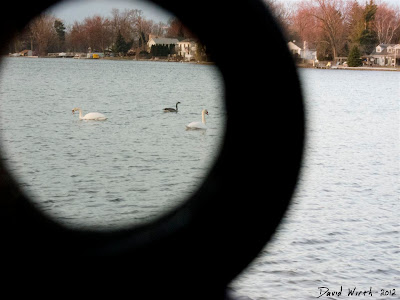DIY - How to Make a Camera Polarizing Filter
While reading about making an ND Filter out of welders glass i also learned about how to take Infrared Photos. Then, while reading about Infrared filters i learned about polarizing filters.
Everyone always says that a polarizing filter is the most important thing to have other than a camera. But looking at comparison pictures with and without the filter i barely saw a difference, so i never really thought twice about it. But i do know that fisherman use polarizing sunglasses to reduce the glare of the sun and help spot fish under water.
A polarizing filter, like polarizing sunglasses, cuts down on glare and reflections from the sun. It is great for outdoor photography. There are also g
I realized that the best way to make the filter was to start with a pair of 3D glasses. I had a couple pairs of Real3D glasses at home.

It turns out that the lenses in those glasses are circular polarized. There is also linear polarized lenses, i'm not exactly sure what the difference is, i think it has to do with what direction the light waves are allowed to pass through.

When i made the ND filter and even for the IR filter i spent a lot of time trying to figure out how i would mount the filter to the camera. I thought of rubber bands taped to cups and all sorts of things. I finally made a simple mount with a PVC ring and some hard foam that would slip tightly onto the lens. The great thing is that this time i just did exactly the same thing. All the hard work of coming up with the idea was already done. So i cut another piece of PVC, glued in the foam and sanded it in about 10 minutes.

I was planning on cutting the Real3D lenses and gluing them to the PVC but then i remembered that a while ago i bought a cheap set of lenses from Amazon that didn't fit any camera i had.

So after coloring in the PVC with a black marker i checked to see if the polarizing filter would fit. It fit just fine and wasn't too heavy.

Here it is all glued together.
To keep it from getting scratched i keep it in a cloth bag i had made for one of my old cameras.

This was at a nearby lake, while i was holding the filter a few inches in front of the camera lens. You can see how the right side of the pictures is much brighter because of the excess light reflecting off the water.

It was early in the morning so i'm not sure that the polarizing filter made that much of a difference. The filter helps the most during bright sunny days.

Everyone always says that a polarizing filter is the most important thing to have other than a camera. But looking at comparison pictures with and without the filter i barely saw a difference, so i never really thought twice about it. But i do know that fisherman use polarizing sunglasses to reduce the glare of the sun and help spot fish under water.
A polarizing filter, like polarizing sunglasses, cuts down on glare and reflections from the sun. It is great for outdoor photography. There are also g
I realized that the best way to make the filter was to start with a pair of 3D glasses. I had a couple pairs of Real3D glasses at home.

It turns out that the lenses in those glasses are circular polarized. There is also linear polarized lenses, i'm not exactly sure what the difference is, i think it has to do with what direction the light waves are allowed to pass through.

When i made the ND filter and even for the IR filter i spent a lot of time trying to figure out how i would mount the filter to the camera. I thought of rubber bands taped to cups and all sorts of things. I finally made a simple mount with a PVC ring and some hard foam that would slip tightly onto the lens. The great thing is that this time i just did exactly the same thing. All the hard work of coming up with the idea was already done. So i cut another piece of PVC, glued in the foam and sanded it in about 10 minutes.

I was planning on cutting the Real3D lenses and gluing them to the PVC but then i remembered that a while ago i bought a cheap set of lenses from Amazon that didn't fit any camera i had.

So after coloring in the PVC with a black marker i checked to see if the polarizing filter would fit. It fit just fine and wasn't too heavy.

Here it is all glued together.

To keep it from getting scratched i keep it in a cloth bag i had made for one of my old cameras.

This was at a nearby lake, while i was holding the filter a few inches in front of the camera lens. You can see how the right side of the pictures is much brighter because of the excess light reflecting off the water.

It was early in the morning so i'm not sure that the polarizing filter made that much of a difference. The filter helps the most during bright sunny days.



No comments:
Post a Comment